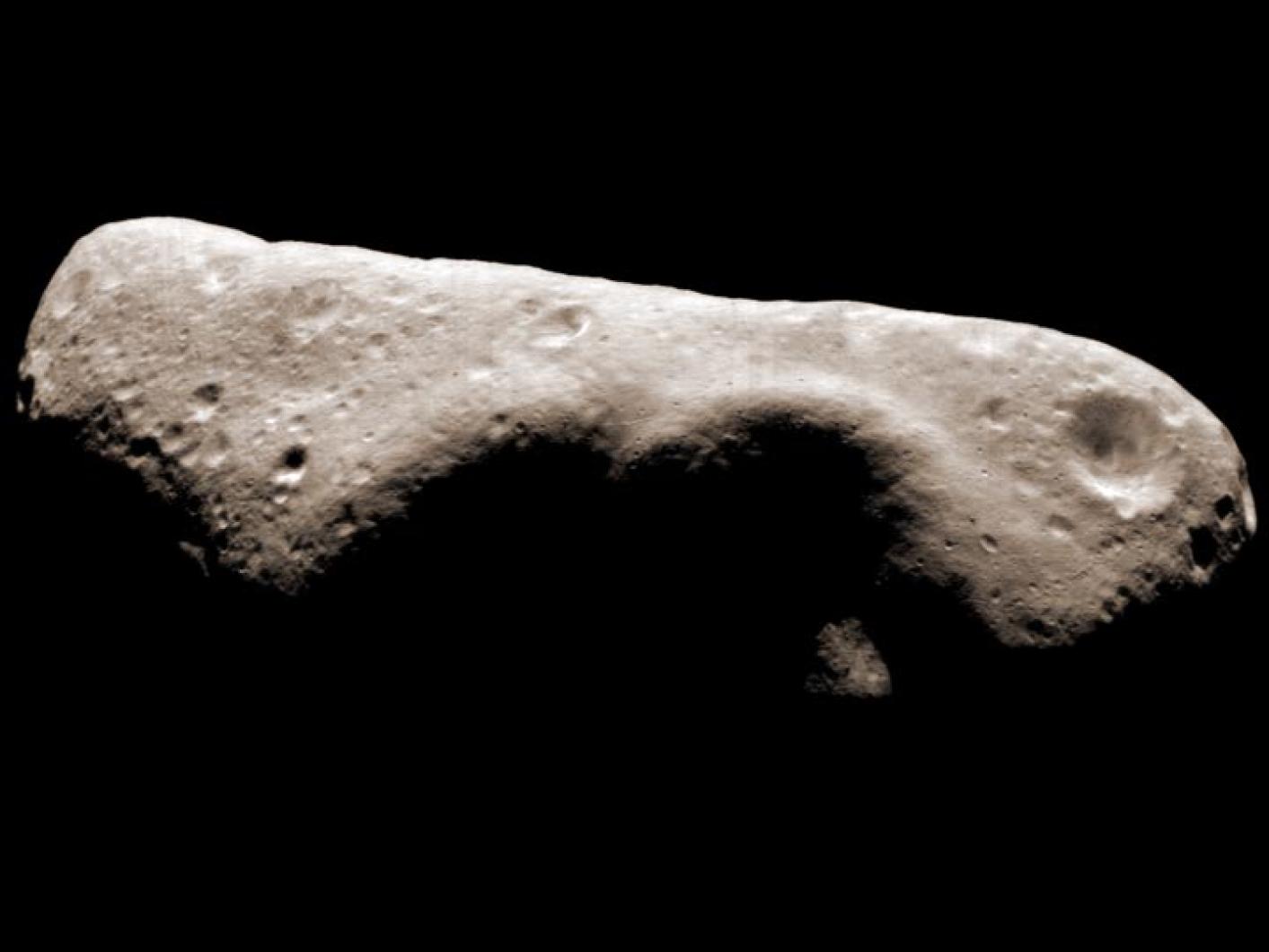Love is in the air — way up in the air.
Beyond the atmosphere, and somewhere between the Earth and Mars, Eros circles the sun. 433 Eros is an asteroid named for the Greek god of love.
The genesis of Eros the god is disputed. Some believe that he was the son of the goddess Aphrodite, while others insist that he was a primordial god, one that had no parents, coming into existence after the gods Chaos, Gaia (earth) and Tartarus (underworld).
The origin of Eros the asteroid is thought to be similar to the genesis of the planets in our solar system, though the celestial body’s discovery is of interest. Two scientists, located in different countries, found the asteroid almost simultaneously. Gustav Witt from Berlin and Auguste Charlois in Nice both observed and described it in 1898.
Asteroids, or planetoids, are small rocky or metallic celestial bodies that orbit our sun. 433 Eros further distinguishes itself as a near-Earth asteroid, one whose orbit brings it close to the Earth. Eros is the second largest near-Earth asteroid (the first being Ganymede) among the more than 7,000 asteroids of this type. At 434 square miles, peanut-shaped Eros is four and a half times larger than the Island of Martha’s Vineyard.
This asteroid has another significant and interesting distinction. In 2000-2001, NASA’s NEAR Shoemaker probe took up orbit around and subsequently landed on its surface. After this landing, a unique space property lawsuit ensued. In 2004, Gregory Nemitz claimed ownership of 433 Eros, declaring it a “spacecraft parking lot,” and went on to attempt to charge NASA a parking and storage fee of $0.20 per year. The suit was quickly dismissed and appeal denied.
Eros is again in the news as it will make a close approach to the Earth. Close is relative, though, passing about 70 times the moon’s distance from the Earth on Jan. 31. It hasn’t come this close to our planet since January 1975, and won’t do so again until January 2056. Jan. 25 and Feb. 13 and 15 will also provide opportunities to view Eros at its brightest time, though most of us will need binoculars or a telescope to see it.
Over the years asteroids often have been maligned. Astronomer Walter Baade of Mt. Wilson and Palomar Observatories called them “the vermin of the skies.” Eros has earned something of an accolade. Fred Whipple, author of Earth, Moon and Planets, quipped, “It is a real pleasure to find a use for an asteroid because asteroids are generally more of a nuisance than a help in astronomy.” Eros’s beneficial use is to help scientists measure astronomical units more easily and effectively.
Eros will remain in the heavens travelling with us through the solar system, though like some couples, it will maintain its own independent orbit. Like lovers, it will sometimes get close and sometimes keep its distance. And acting a lot like its namesake, love, the asteroid Eros may be rocky, and every so often distant, but it does always come around again.
Suzan Bellincampi is director of the Felix Neck Wildlife Sanctuary in Edgartown.




Comments
Comment policy »